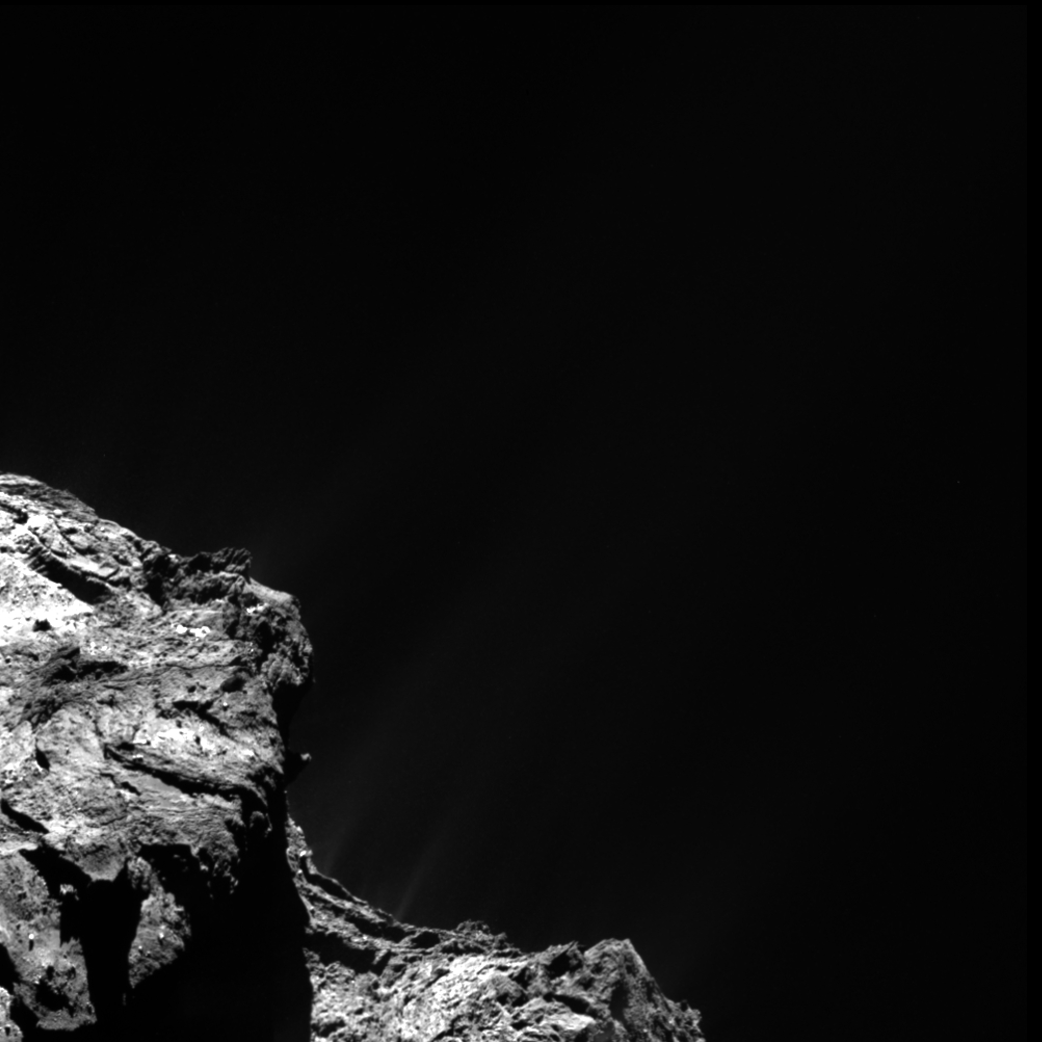
Copyright:
原文:
There she blows! A dramatic demonstration of how short-lived some comet jets can be was documented in late July by the robotic Rosetta spacecraft orbiting the nucleus of Comet 67P/Churyumov-Gerasimenko. The featured animation depicts changes in the rotating comet with three illuminating stills. Although the first frame shows nothing unusual, the second frame shows a sudden strong jet shooting off the 67P’s surface only 20 minutes later, while the third frame — taken 20 minutes after that — shows but a slight remnant of the once-active jet. As comets near the Sun, they can produce long and beautiful tails that stream across the inner Solar System. How comet jets produce these tails is a topic of research — helped by images like this. Another recent Rosetta measurement indicates that the water on Earth could not have come from comets like 67P because of significant differences in impurities. Comet 67P spans about four kilometers, orbits the Sun between Earth and Jupiter, and has been the home for ESA’s Rosetta spaceship since 2014 August. Rosetta is currently scheduled to make a slow crash onto Comet 67P’s surface in late 2016.
中文翻譯:
🌌「看!彗星噴射!」在七月底,機械人太空船Rosetta成功拍下了彗星67P/丘留莫夫-赫羅西門科表面的短暫噴射現象。這段動畫展示了彗星在旋轉過程中的變化,透過三個引人注目的靜態圖像。第一張圖片顯示一切正常,但第二張則在20分鐘後捕捉到了一個強大的噴射從67P的表面射出,第三張圖片在隨後的20分鐘拍攝,噴射的痕跡幾乎消失。當彗星靠近太陽時,它們會產生長而美麗的尾巴,劃過內太陽系。彗星噴射如何形成這些尾巴仍然是研究的課題,而這些圖片正是研究的重要幫手。最近的Rosetta測量顯示,地球上的水分並不是來自像67P這樣的彗星,因為它們的雜質存在顯著差異。彗星67P長約四公里,圍繞著太陽在地球和木星之間的軌道運行,自2014年8月以來,一直是歐洲太空局的Rosetta太空船的“家”。Rosetta目前計劃於2016年晚些時候緩慢墜落到67P的表面。
#彗星 #67P #Rosetta #太空探索 #宇宙奇觀 #科學研究 #彗星噴射 #天文學 #太空船
來源:NASA每日圖片


